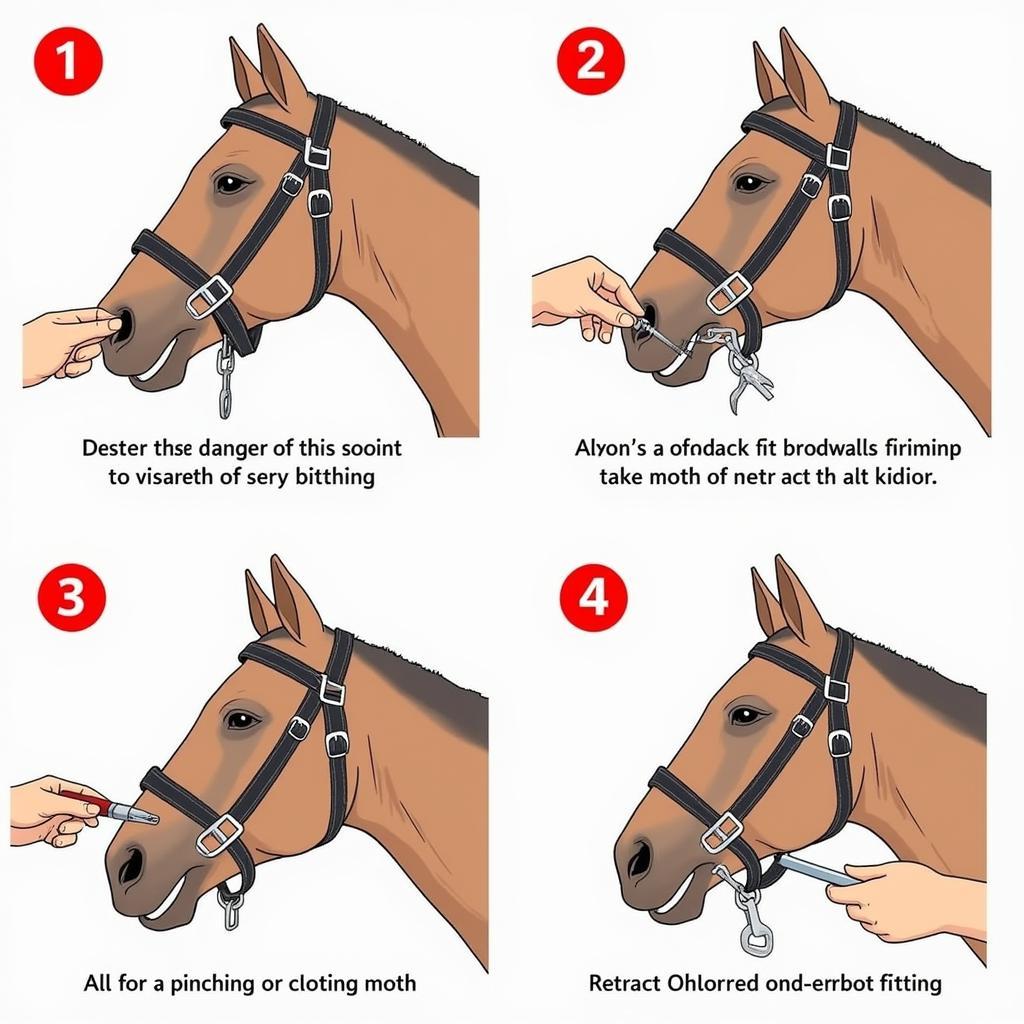Bit rings play a crucial role in how a horse responds to the rider’s cues. They attach to the bit and bridle, influencing pressure and communication. Choosing the right bit ring is vital for a comfortable and effective riding experience. This article dives deep into the world of bit rings, exploring different types, their effects on horses, and how to choose the perfect fit for your equine partner.
Exploring Different Types of Bit Rings
There’s a wide variety of bit rings available, each with its own unique characteristics. Some of the most common types include:
- Loose Ring: These rings rotate freely, allowing for more movement and flexibility in the horse’s mouth. They can encourage relaxation and prevent the horse from leaning or fixing on the bit.
- Eggbutt: Similar to loose rings but with a slightly oval shape, eggbutt rings offer a bit more stability and are generally considered gentler. They are a good choice for sensitive horses.
- D-Ring: Shaped like a “D,” these rings offer more lateral stability and prevent the bit from sliding through the horse’s mouth. They are often used in western riding and for horses that tend to pull or lean.
- Full Cheek: These rings have long arms extending up and down, providing even more lateral stability and preventing the bit from being pulled through the horse’s mouth. They are especially helpful for young or green horses.
Understanding the nuances of each type is key to selecting the best option for your horse. Choosing the right bit ring can significantly impact your horse’s comfort and performance. What’s the best time to see horses on cumberland island?
How Bit Rings Influence Communication and Control
The type of bit ring you choose will directly affect how the bit communicates with your horse. Loose rings, with their increased mobility, allow for more subtle cues and encourage a lighter feel. Conversely, D-rings and full cheek bits provide more control and are often used for horses that require clearer direction. For instance, a horse with a tendency to root or lean might benefit from the stability of a D-ring. What if your horse with fly mask needs a bit ring?
Choosing the Right Bit Ring for Your Horse
Selecting the appropriate bit ring isn’t a one-size-fits-all process. It’s important to consider your horse’s individual needs and temperament. A sensitive horse might prefer the gentleness of an eggbutt ring, while a more boisterous horse might benefit from the control offered by a full cheek.
- Experience Level: For green horses, a full cheek bit can provide stability and prevent the bit from being pulled through the mouth. More experienced horses may prefer the subtler cues of a loose ring.
- Discipline: Certain disciplines favor specific bit rings. For example, D-rings are common in western riding, while loose rings are often seen in English disciplines.
- Temperament: A horse that tends to lean or pull may benefit from a D-ring or full cheek. A sensitive horse might prefer an eggbutt or loose ring.
- Fit: The bit ring should fit comfortably in the horse’s mouth without pinching or rubbing. Consult a professional for proper bit fitting.
“A well-fitted bit and properly chosen bit ring can make a world of difference in a horse’s comfort and responsiveness,” says renowned equine behaviorist Dr. Emily Carter. “It’s essential to understand the nuances of each type to make an informed decision for your horse.”
 Properly Fitting Bit Rings on a Horse
Properly Fitting Bit Rings on a Horse
Bit Rings and Horse Behavior
The bit ring can play a role in addressing certain behavioral issues. For example, a horse that tends to overbend or lean on the bit might benefit from the increased mobility of a loose ring. This allows for more subtle corrections and encourages the horse to seek a lighter contact. Sometimes a good horse betting jokes can lighten the mood. Do you know do horses show affection?
“It’s important to remember that the bit ring is just one piece of the puzzle,” adds Dr. Carter. “Proper training and a balanced rider are also crucial for effective communication and control.” Understanding your horse’s individual needs and working with a qualified trainer can help you find the most suitable bitting solution. Do you know what is the best time to see horses on cumberland island?
Conclusion
Choosing the right bit rings for your horse is a crucial aspect of ensuring their comfort and responsiveness while riding. By understanding the different types of bit rings and their effects, you can make an informed decision that enhances communication and control. Remember, consulting with a professional for proper bit fitting is always recommended.
FAQ
- What is the most common type of bit ring? Loose rings are often seen in English riding disciplines.
- Which bit ring offers the most control? D-rings and full cheeks provide more control.
- What should I consider when choosing a bit ring? Consider your horse’s experience, discipline, temperament, and the fit.
- Can bit rings help with behavioral issues? Yes, the right bit ring can address issues like leaning or overbending.
- Where can I get help with bit fitting? Consult a qualified equine professional.
Need support? Contact us 24/7: Phone: 0772127271, Email: [email protected], or visit us at QGM2+WX2, Vị Trung, Vị Thuỷ, Hậu Giang, Việt Nam.